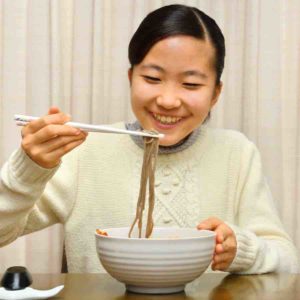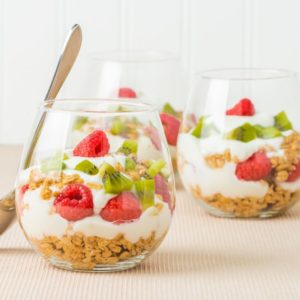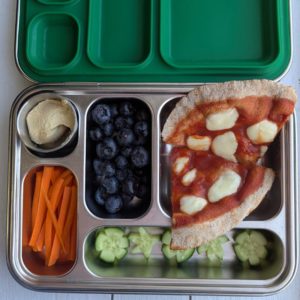
Yes, buckwheat is, in fact, gluten-free and is a nutrition powerhouse! Learn about the fine points of buckwheat — what it is, how to eat it, and why it’s good for us.
Even though buckwheat has “wheat” in its name, it doesn’t actually contain any wheat (which is where we find the protein gluten). This makes it a fantastic gluten-free super grain that can be enjoyed as the grain itself, noodles, porridge, and so much more. Let’s take a closer look at all of its benefits and ways to eat it.
So, What is Buckwheat?
- Buckwheat, or as it’s known by its scientific name, Fagopyrum Esculentum, is a pseudo-cereal (not a cereal). This means that it does not come from a grass seed like most cereals but is still eaten and treated the same way that traditional cereals are.
- It is made from the seed of a plant that is related to rhubarb (a vegetable often used in desserts) and sorrel (small edible green plant).
- Its origins trace back to ancient China. It was introduced to Europe in the 15th-16th centuries and to North America in the 17th century. Currently, the two top producers are China and Russia.
- Popular buckwheat products include buckwheat groats (the hulled seeds from the buckwheat plant), buckwheat flour, Japanese “soba” noodles, Italians “pizzoccheri” pasta, and “kasha” (roasted groats).
Buckwheat Nutrition Information
One cup of cooked Kasha, a hot cereal-like breakfast food, contains 155 calories and is loaded with essential nutrients. It provides 6 grams of protein, 4.5 grams of fiber, 20% of the adult RDA for magnesium (a nutrient most American’s are lacking), along with other important nutrients like folate, zinc, copper, and thiamin. (1)
Is Buckwheat Gluten-Free?
One percent of our population suffers from Celiac Disease, which means they cannot safely consume products that contain gluten like wheat, barley, and rye. Luckily, buckwheat is suitable for their diet! If you or your child has been diagnosed with Celiac Disease, buckwheat is an amazing grain to incorporate into your diet. Just be sure to pay close attention to nutrition labels – some products like soba noodles and buckwheat pancake mixes are likely to contain wheat!
Let’s Talk About Some Buckwheat Benefits!
It’s packed with fiber and prebiotics
- Fiber promotes digestive health and helps stabilize blood sugar levels. Its high content of soluble fiber makes buckwheat a cholesterol-lowering food, just like oatmeal. Wondering how much fiber your kid needs? Find out here.
- Buckwheat contains prebiotics that helps keep your digestive system healthy. They also help lower the risks of certain types of cancer and enhance calcium absorption. (5)
It provides protein
- The protein composition in buckwheat resembles the standards of the World Health Organization for a nutritionally balanced protein.
- Buckwheat offers a complete protein in your diet because it contains all of the essential amino acids that our bodies require! Check out our article on ancient grains and seeds, to learn more about the power of these “pseudo-cereal” seeds.
- Research on buckwheat protein-extracts revealed that it contains blood pressure-lowering components. (6)
It’s loaded with antioxidants
- When we say loaded, we mean it! Buckwheat has 2-5 times more phenolic compounds (antioxidants) than oats or barley. (2) These antioxidants protect cells from damage and fight cellular stress by scavenging free radicals. One type of antioxidant abundant in buckwheat, called rutin, can help increase the strength and flexibility of capillary blood vessels. This makes capillaries more permeable to blood flow, which helps keep our organs oxygenated and protects our eyesight.
- Antioxidants in buckwheat may also help prevent cancer by protecting our cells from DNA damage caused by free radicals. Adult cancer prevention starts now with kids!
- The antioxidant, phenolic compounds also play a role in protecting our hearts by helping to prevent the collection of platelets and blood clot formation, which are major players in cardiovascular disease. (3)
It contains phytosterols
Buckwheat is an excellent source of plant sterols, known for their cholesterol-lowering effects. Plant sterols help to lower cholesterol by stopping some cholesterol from being absorbed in your intestines. (4)
- Use the Super Crew Whole Grain Tracker this week for motivation to boost your kids’ whole grain intake and try something new like buckwheat noodles! Then head over to our shop page, and inspired your kids with our activity + cookbook all in one that features tasty whole-grain breakfasts and learning activities.
It has trace minerals and vitamins
Cooked buckwheat is packed with manganese and magnesium and also contains niacin, riboflavin, thiamin, zinc, and copper, all of which are important for growing kids’ health and wellness and best when obtained through food.
It’s good for sustainable agriculture
It’s always an added bonus when we choose crops that are good for the environment too! Buckwheat is a sustainable crop because it grows on relatively poor soils, it offers a good food source and habitat for wildlife, and it’s one of the best temporary honey-crops (it’s beneficial to bees). The phenolic content of buckwheat isn’t just good for us—it also helps make the buckwheat plant resistant to pests, diseases, UV radiation, and unfavorable soil conditions. These factors make it an easy crop to grow without using pesticides.
Tips on How to Cook Buckwheat
Groats or Kasha
Use either of these to make gluten-free buckwheat porridge for a sweet breakfast or savory lunch! If using groats, toast in a dry pan for 2-3 minutes, add liquid of choice (water, milk, or milk alternative), add lid, and simmer for 10 minutes. Leave the lid on and let buckwheat steam for an additional 5 minutes. Serve with sweet toppings (fresh or dried fruit, nuts, honey, nut butter) or savory (roasted veggies and fried egg) for a nutritious and filling breakfast or lunch!
Buckwheat flour
Use buckwheat flour in pancakes, waffles, cookies, or brownie recipes! Try subbing buckwheat flour for ½ the amount of regular flour the recipe requires for extra fiber and nutrients! We love buckwheat waffles –you can substitute buckwheat for the oat flour in this tasty banana waffle recipe, add in three bananas to balance the heavier taste.
Buckwheat products
Toss cooked soba noodles with julienned veggies, soy sauce, and sesame oil for a tasty and easy dinner. Try swapping out regular white pasta for pizzoccheri (buckwheat pasta) or soba noodles in your family’s go-to pasta dish.
Next time someone asks, “Is buckwheat gluten-free?” you’ll have the answers! Want more ways to eat buckwheat as a family? Here are some additional buckwheat meal ideas!













